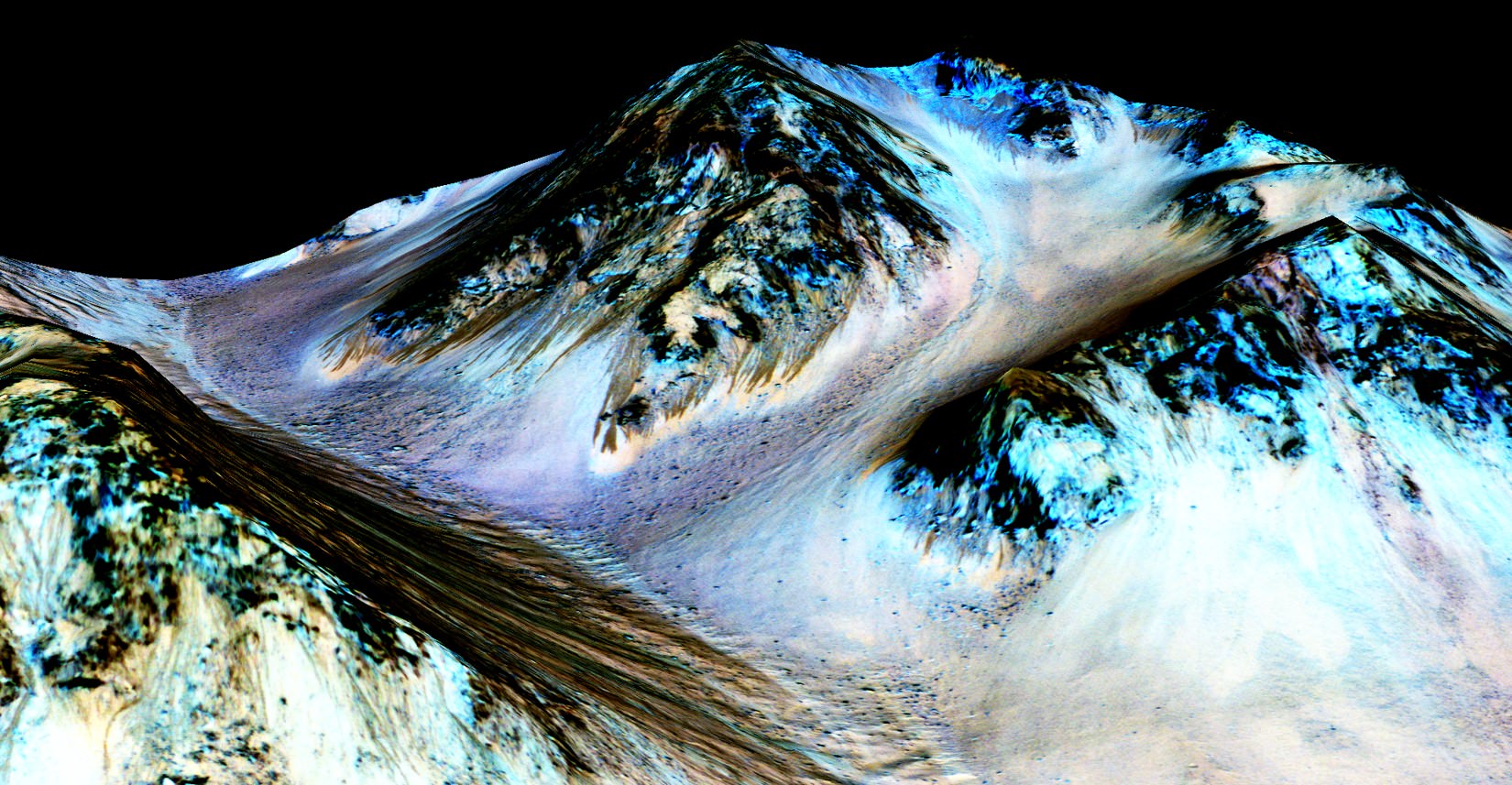It’s no secret that Mars once had abundant water flowing on its surface in the forms of rivers, lakes, and even an ocean. For this reason, scientists continue to wonder whether or not Mars might have had life in the past. Today, the surface is an extremely cold, dry place where even a single droplet of water would instantly freeze, boil, or evaporate. Unless, of course, the water had salt dissolved in it.
If these “briny” patches still exist on Mars, then it’s possible there are small pockets on the surface where microbes can still exist. This presents problems as far as issues of “planetary protection” are concerned. However, a new study led by the Lunar and Planetary Institute (LPI) has shown that if life from Earth were brought over by robotic or human explorers, it probably couldn’t survive in these brines.
The study that describes their findings, titled “Distribution and habitability of (meta)stable brines on present-day Mars“, recently appeared in the journal Nature Astronomy. The team responsible included members from the Universities Space Research Association (USRA), which oversees the LPI, the University of Arkansas Center for Space and Planetary Sciences, and the Southwest Research Institute (SwRI).

After the Phoenix lander arrived on Mars in 2008, mission scientists saw evidence of brine droplets forming on one of the struts. This and other observations led to the conclusion that salts are relatively common on the Martian surface. In addition, where temperature and relative humidity conditions are just right, some of these salts can undergo a process called deliquescence – where they take in water from the atmosphere.
While water is unstable on the Martian surface, previous models have shown that stable brines can form and persist between the equatorial region and high latitudes during certain times of the year for up to six consecutive hours. This is a broader range than what was previously thought, but this latest study indicates that the temperatures are well below the lowest temperatures to support life.
As Dr. Vincent Chevrier, co-author of the study from the University of Arkansas, said in an LPI press release:
“We’ve been conducting experiments under Martian simulated conditions at the University of Arkansas for many years now to study these types of reactions. Using what we’ve learned in the lab, we can predict what will likely happen on Mars.”

For the sake of their study, the team used laboratory measurements of Mars-relevant salts along with Martian climate information from both planetary models and spacecraft measurements. With the help of a scientist from the SwRI, whose research was funded by NASA through the Habitable Worlds program, they developed a model to predict where, when, and how long brines are stable on the surface (and shallow subsurface) of Mars.
From this, they sought to determine if salty pockets of water present on the Red Planet are capable of supporting life as we know it on Earth. Dr. Alejandro Soto, a senior research scientist at the SwRI and co-author of the study, was responsible for the climate model. As he said in a SwRI press release:
“Our team looked at specific regions on Mars — areas where liquid water temperature and accessibility limits could possibly allow known terrestrial organisms to replicate — to understand if they could be habitable. We used Martian climate information from both atmospheric models and spacecraft measurements. We developed a model to predict where, when and for how long brines are stable on the surface and shallow subsurface of Mars.
“Even extreme life on Earth has its limits, and we found that brine formation from some salts can lead to liquid water over 40% of the Martian surface but only seasonally, during 2% of the Martian year. This would preclude life as we know it.”

Brines have a lower freezing temperature than pure liquid water and are also subject to slower evaporation. But because Mars is hyper-arid, they would also need significantly lower temperatures than are required on Earth for water to condense in the atmosphere and remain stable. In other words, the air needs to be very cold to achieve high relative humidity.
In the end, the team determined that brines would experience a maximum temperature of -48 °C (-55° F). In addition, they found that certain salts could result in seasonal brines forming over 40% of the Martian surface – but only for 2% of the year. Not only is this temperature right at the lower boundary of what life-forms on Earth can theoretically tolerate, it also means that brines are very intermittent on Mars.
Dr. Edgard Rivera-Valentín, a planetary scientist and NASA Early Career Fellow with the LPI, was the lead author on the study. As he summarized in a recent USRA/LPI press release:
“In our work, we show that the highest temperature a stable brine will experience on Mars is -48°C (-55° F). This is well below the lowest temperature we know life can tolerate… We have shown that on a planetary scale the Martian surface and shallow subsurface would not be suitable for terrestrial organisms because liquids can only form at rare times, and even then, they form under harsh conditions. However, there might be unexplored life on Earth that would be happy under these conditions.”

These results are good news for future missions to Mars, especially where astronauts are concerned. For years, missions planners have been concerned that additional rovers, landers, and astronauts could pose a threat to any indigenous life forms. Knowing that Earth microbes could not survive in a Martian environment reduces the risk of possible contamination.
Studies of this kind are essential to future exploration efforts, especially missions that are searching for evidence of extra-terrestrial life. When missions to Europa, Ganymede, and other “ocean worlds” become common, preventing contamination will be of vital importance. After all, searching for evidence of life beyond Earth is pretty pointless if you destroy it in the process!

